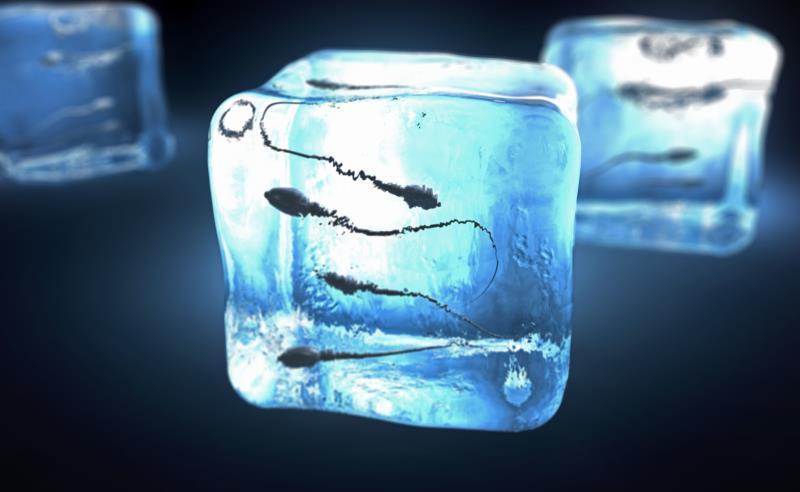Embryo Cryopreservation ExplainedFeb 15, 2021
Incipient organism cryopreservation is the way toward freezing and putting away undeveloped organisms and is a piece of most in vitro preparation programs. The interaction is picked for reasons as shifted as giving an extra opportunity to pregnancy or saving incipient organisms even with certain clinical medicines.
What is in vitro preparation (IVF)?
Numerous ladies and their accomplices go after quite a while to get pregnant, yet can’t. Some may go to the cycle of in vitro treatment (IVF) to assist them with having an infant.
With IVF, a lady’s egg cells and a man’s sperm cells are assembled in a dish in an exceptional liquid in the research facility. The new cell that is made when an egg cell and a sperm cell join is called an incipient organism. The specialist at that point moves the incipient organism into the lady’s uterus (belly). The undeveloped organism inserts (joins) to the mass of the uterus, where it forms and develops into a child.
As a feature of the IVF cycle, the lady is given uncommon medications that cause her ovaries to deliver more egg cells than typical. The man additionally gives a high number of sperm cells. With many egg and sperm cells to work with, a few undeveloped organisms are regularly made. The specialist will move one to four undeveloped organisms, because of the lady’s age, into her uterus to bring down the odds that she will have more than one child. That implies there might be a few incipient organisms left finished.
What is incipient organism cryopreservation?
Incipient organism cryopreservation is the way toward freezing and putting away the additional undeveloped organisms. The undeveloped organisms are then defrosted and utilized sometime in the future. Incipient organism cryopreservation is an imperative piece of most IVF programs. As per the National Embryo Donation Academy, there were around 500,000 incipient organisms away in the United States in 2011.
For what reason is undeveloped organism cryopreservation done?
There are numerous reasons a man and lady may decide to freeze and store their incipient organisms:
1) They may feel it is a preferred alternative over having the additional undeveloped organisms annihilated.
2) It can give one more opportunity to get pregnant if the IVF cycle bombs the first run through. The couple won’t need to experience IVF once more.
3) If the man and lady have a child, they can utilize the incipient organisms later to have a subsequent infant.
4) The lady can save incipient organisms before she starts therapies, for example, for disease, that may diminish or wipe out her odds of getting pregnant.
5) The undeveloped organisms could be saved and given to another person in a benefactor program.
6) The incipient organisms could be saved and given for research.
How is incipient organism cryopreservation done?
A cell is made up generally of water. The principal concern when freezing incipient organisms is ice shaping in and between the cells. Ice precious stones can hurt the cell divider and can hurt the little constructions inside the cell.
The undeveloped organism should be ensured during the freezing interaction. This is finished utilizing unique liquids called cryoprotective specialists (CPAs). CPAs resemble “a liquid catalyst” for cells.
Specialists utilize two distinct strategies to freeze and save undeveloped organisms: moderate programmable freezing and vitrification.
In the sluggish freezing strategy, the incipient organisms are frozen gradually, in stages. The CPAs are added to the undeveloped organisms in expanding qualities for more than 10 to 20 minutes. At that point, the incipient organisms are gradually cooled for more than two hours in a machine that brings down the temperature step by step. When frozen, the undeveloped organisms are put away in fluid nitrogen at - 321° Fahrenheit (- 196.1° Celsius).
Vitrification is a fast freezing method that utilizes a lot of qualities of CPAs. With this strategy, the specialist initially blends the CPAs in the undeveloped organisms. CPAs that are solid can likewise hurt the cell. To forestall this, the incipient organisms are immediately positioned into the fluid nitrogen. This interaction transforms them into a nearly strong state, similar to glass. In this state, ice can’t frame.
At the point when required, the incipient organisms are gradually defrosted. They are absorbed extraordinary liquids to eliminate the CPAs. This additionally reestablishes the cell’s typical water balance.
When is undeveloped organism cryopreservation done?
Incipient organisms are frequently frozen from one to six days after they are made.
How long would embryos be able to be put away?
Whenever they are frozen, the undeveloped organisms are put away in fixed fluid nitrogen coolers. Undeveloped organisms can be frozen in fluid nitrogen for a long time. It isn’t realized how long undeveloped organisms can be frozen securely and still be helpful. A few nations have set time limits on how long undeveloped organisms can be put away.
How protected is incipient organism cryopreservation?
Exploration has indicated that freezing and defrosting incipient organisms doesn’t hurt the infant. Kids conceived from frozen undeveloped organisms have no more noteworthy pace of birth imperfections or medical issues than youngsters conceived from incipient organisms that were not frozen.
Does incipient organism cryopreservation work?
Numerous sound infants have been conceived from incipient organisms that were frozen and defrosted. A few infants have been conceived from undeveloped organisms frozen for over 10 years. IVF programs with great cryopreservation strategies have a similar pregnancy rate with new and frozen incipient organisms.
Be the first to post a message!
